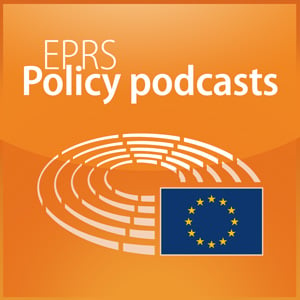Young people and the news
European Parliament - EPRS Policy podcasts
European Parliament Webmaster
4.8 • 13 Ratings
🗓️ 22 November 2024
⏱️ 3 minutes
🧾️ Download transcript
Summary
- Original publication on the EP Think Tank website
- Subscription to our RSS feed in case your have your own RSS reader
- Podcast available on Deezer, iTunes, TuneIn, Stitcher, YouTube
Source: © European Union - EP
Transcript
Click on a timestamp to play from that location
| 0:00.0 | Welcome to the European Parliamentary Research Service podcasts. |
| 0:05.0 | Young, connected and informed? |
| 0:09.0 | What are the news habits of today's youth? |
| 0:12.0 | And how can the EU promote media literacy and protect them from misinformation and disinformation on social media channels? |
| 0:19.0 | Stay with us. |
| 0:29.6 | Back in the day, getting the news meant sitting down with a coffee and a newspaper, or catching the evening TV news. But for young people nowadays, news is just one scroll away. |
| 0:34.6 | Not surprising, when you consider that 96% of young people in the EU use the internet |
| 0:40.1 | daily, and around 84% of them are on social media platforms such as Instagram, TikTok and |
| 0:46.4 | Snapchat. And that's where they're getting most of their news, especially Gen Z. |
| 0:51.3 | And not from traditional journalists. Instead, influencers and celebrities have become accidental news anchors. |
| 0:59.0 | In France, for example, young people are getting major news updates from YouTuber Hugo |
| 1:04.0 | DeCript, who got close to 6 million followers on TikTok. |
| 1:08.0 | So what's the problem with traditional news? Well, to start with, young people feel like it's kind of boring. |
| 1:15.6 | They're saying, why do we only hear about politics, economics and all these repetitive, narrow issues? |
| 1:21.6 | Instead, social media offers them news about a wider range of topics, from climate change to sexuality, |
| 1:29.3 | with updates on music and fashion trends, sports, travel, and yes, sometimes the serious stuff too. |
| 1:35.3 | Moreover, young people prefer watching over reading news. And as they're skeptical about all sources, |
| 1:42.3 | they look for diverse voices and perspectives instead of relying exclusively on mainstream news brands. |
| 1:49.0 | They also want news outlets to show a little personality, even take a stand on big issues. |
| 1:55.0 | And as a result of their reliance on mobile devices, much of their media use is on demand and algorithmically personalized. |
| 2:02.6 | So what does this shift in news consumption patterns mean? |
| 2:06.6 | It means that news organizations must get creative. |
... |
Transcript will be available on the free plan in -130 days. Upgrade to see the full transcript now.
Disclaimer: The podcast and artwork embedded on this page are from European Parliament Webmaster, and are the property of its owner and not affiliated with or endorsed by Tapesearch.
Generated transcripts are the property of European Parliament Webmaster and are distributed freely under the Fair Use doctrine. Transcripts generated by Tapesearch are not guaranteed to be accurate.
Copyright © Tapesearch 2025.

